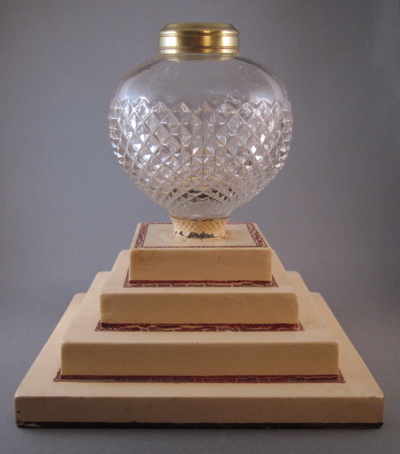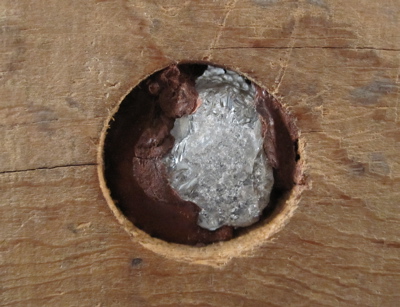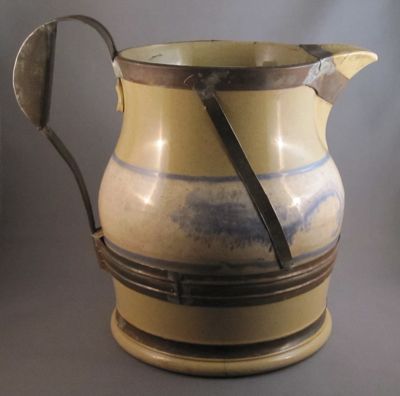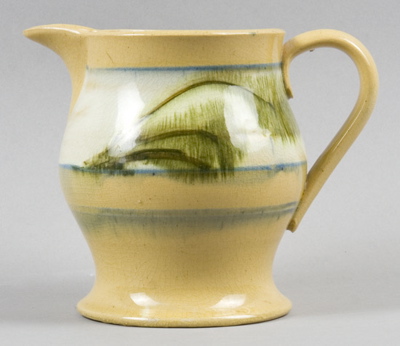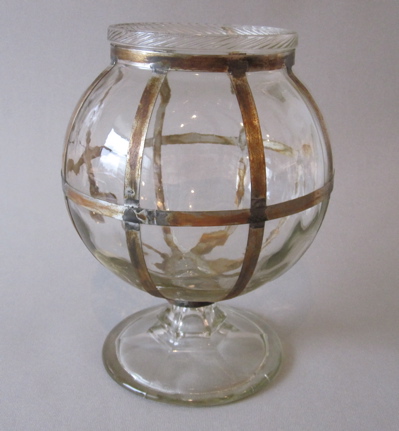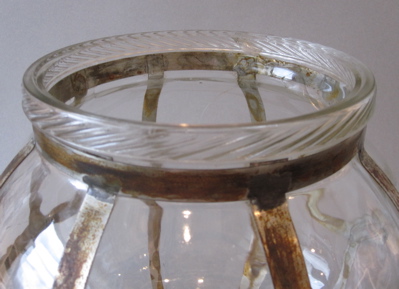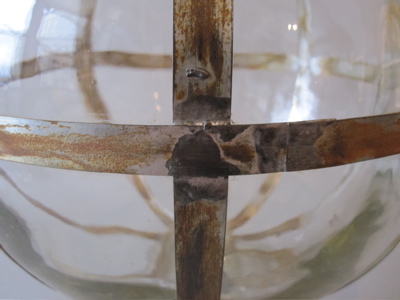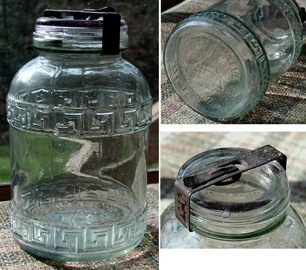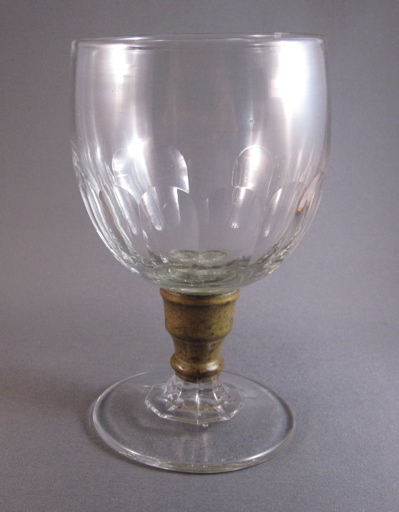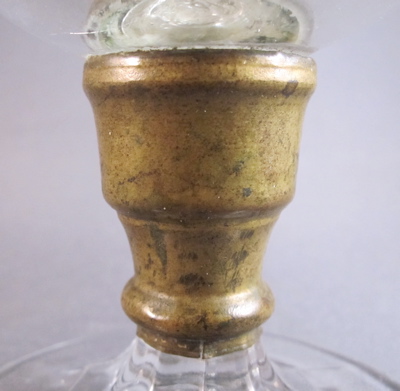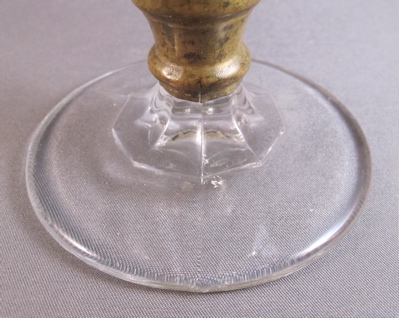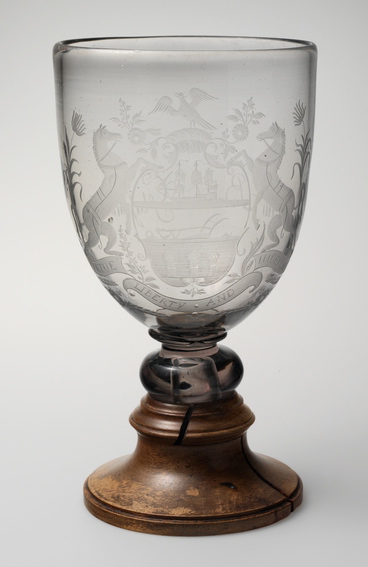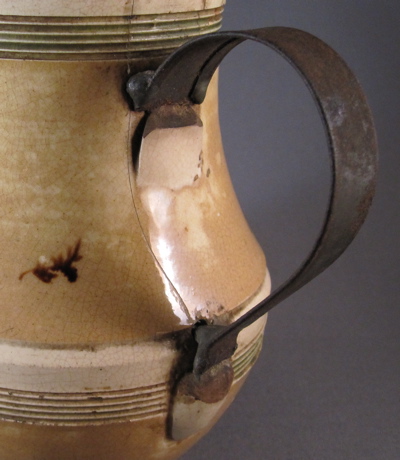The person who repaired this 7″ tall EAPG (Early American Pattern Glass) oil lamp in the “Sawtooth” pattern threw caution to the wind and developed their own whimsical pyramid base, which bares no resemblance at all to the original glass base
This joint is where the lamp attaches to the painted base, showing “alligator” finish red line detailing
The overscaled base measures 7″ square
The remains of the heavily sawtoothed stem are visible from the underside of the base
This identical lamp, fully intact, reveals how much is actually missing from my lamp
Photo courtesy of iOffer
